Y’all remember July? The Royals were flying high, the Wild Card—heck, the American League Central—was within reach and Alex Gordon was having the worst year of his professional career.
Okay, some things haven’t changed. But of all the rising and falling, surging and flailing done by various Royals in the season’s second half, none is more curious, more damning and (sadly) less surprising than that of Jason Vargas.
Going into the All-Star break, a case—a good case—could be made that the Doctor should start the Midsummer Classic. He was the AL ERA leader for a time, the first player in the majors to double-digit wins and—sentimentally—Chris Sale would likely get another chance down the road. One could never tell when the other shoe might drop in regard to Vargas, a recent graduate from the Tommy John School of Ligament Reconstruction who had never reached heights this lofty, this consistently, prior to the first half of 2017.
So when Vargas returned to earth, he did so with a most unpleasant bump. Opponents are slashing .301/.375/.568, Vargas has a 6.80 ERA and 6.27 FIP and a HR/FB rate that went from 7.9 percent to 20.0 percent from the first half to the second.
These are the results. What, one wonders quietly to oneself, might the cause be?
Choices
Vargas has decided to make some different choices in the second half than in the first. To wit, with splits from Opening Day to June 30 and July 1 to now:
- A guy possessing a mid-80s fastball is throwing it five percent more often (24 percent to 19 percent) on first pitch to lefties but isn’t even giving righties a cursory look at it, showing heat on just four percent to the opposite side of the plate (compared to 26 percent in the first half).
- In lieu of trusting his stuff—particularly his curveball, his bread-and-butter pitch—when he falls behind, a soft-tosser is throwing changeup 13 percent more (33 percent to 20) to lefties and three percent more (43 to 40) to righties.
- Ahead and with two strikes to lefties, Vargas has abandoned the curve (used 38 and 36 percent of the time pre-July, 29 percent since July 1).
- Overall, Vargas throws sinker 40 percent of the time to righties and 34 percent to lefties—those numbers were 26 and 28 percent in the first half. The good news is that opponents have a 1.041 OPS against Vargas’ sinker this season. It’s possible I don’t know the difference between good news and bad news.
- Even though his fastball is… not great… there’s a direct correlation to when he quit throwing it and when he started getting his butt kicked. Have a look:
Command
This one doesn’t need much in the way of an explainer. Vargas threw strikes on 64.7 percent (1043-of-1618) pitches. That number has fallen to 60.7 percent (532-of-876). Maybe it’s not much, but at roughly four strikes per game, it’s the difference between being Zack Greinke and being someone who is not very good (among qualified starters for a full season, the only person I could find below 61 percent was Wade Miley, who is terrible).
Release Point
Here’s a couple of fun charts. I want you to guess what happened here.
And here’s this.
Couple thoughts here: seems like the release point of the curveball has been a little higher in the second half, that he’s dropping down on the changeup and that overall the release point has trended lower.
Getting Hit… hard
Vargas’ homer rate spiking can be linked to the whole “spiking of opponents power against him thing.” It’s precipitated a 10 percent increase from first half to second in hard-hit ball rate, a four-percent increase in line-drive rate and an opposing wOBA that went from .287 to .409.
The next two graphs show the ISO power fluctuations against certain types of Vargas pitches from first half to second.
Note the difference in the left column between the two graphs. Everything in general being hit harder and opposing power rates have climbed steadily all season against his fastball.
Flashback to our first subhead. He’s throwing fastball more. He’s going to the changeup more when he falls behind. It’s a classic chicken-or-egg conundrum: are two of Vargas’ worst offerings getting hit harder because he’s throwing them more or is he throwing them more out of fear that people will start keying on the stuff with some movement, perhaps because it has been less accurate and his release point has, ever so slightly, been a little off? And if that’s the case, why wouldn’t he reverse course now, with the results being what they have been?
I don’t have the answers, mind you. There are only so many guys that can carve out a high-level big-league career with a fastball that only occasionally scrapes 90 mph.
Vargas was turning in vintage Greg Maddux season early on. His margin for error was so slim that a slight slip in mechanics and an alteration in approach, for reasons known only to him, Eiland and Ned Yost, has sent him into a spiral. If—huge if—the Royals are going to slip into the second Wild Card spot, Vargas has to at least try to return to what was working in the first half.
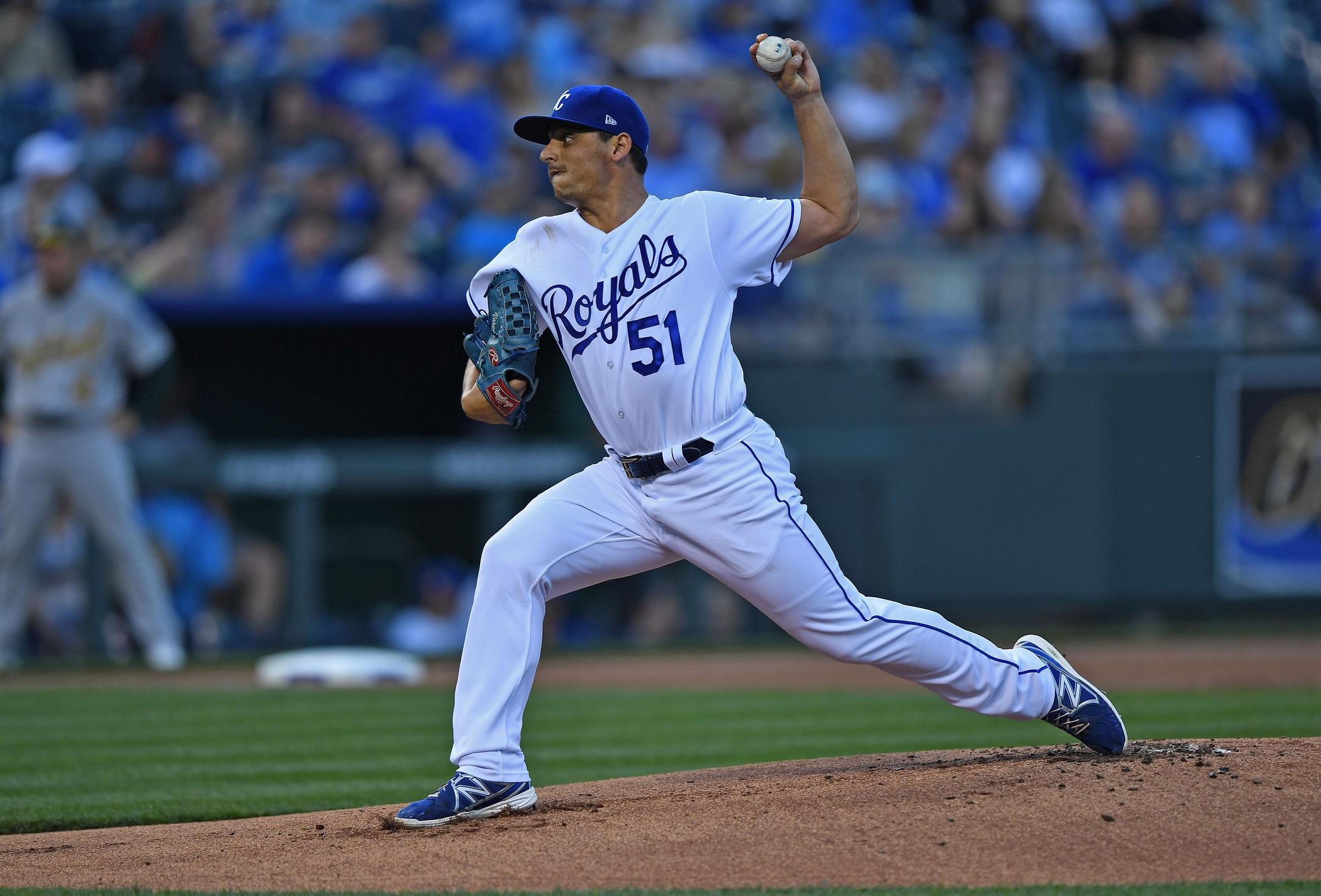
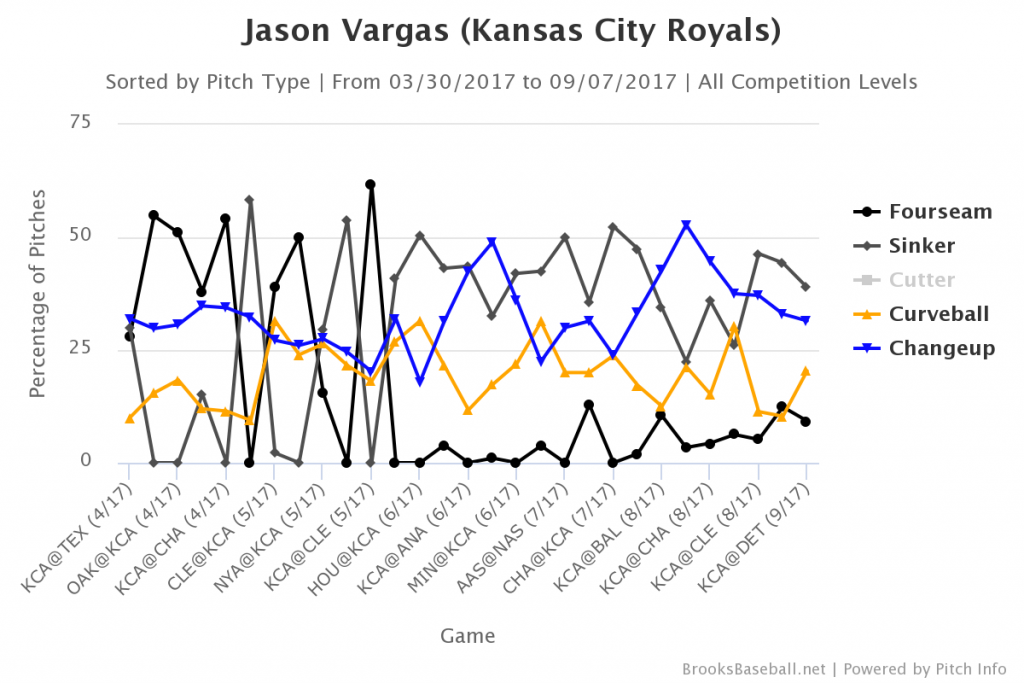
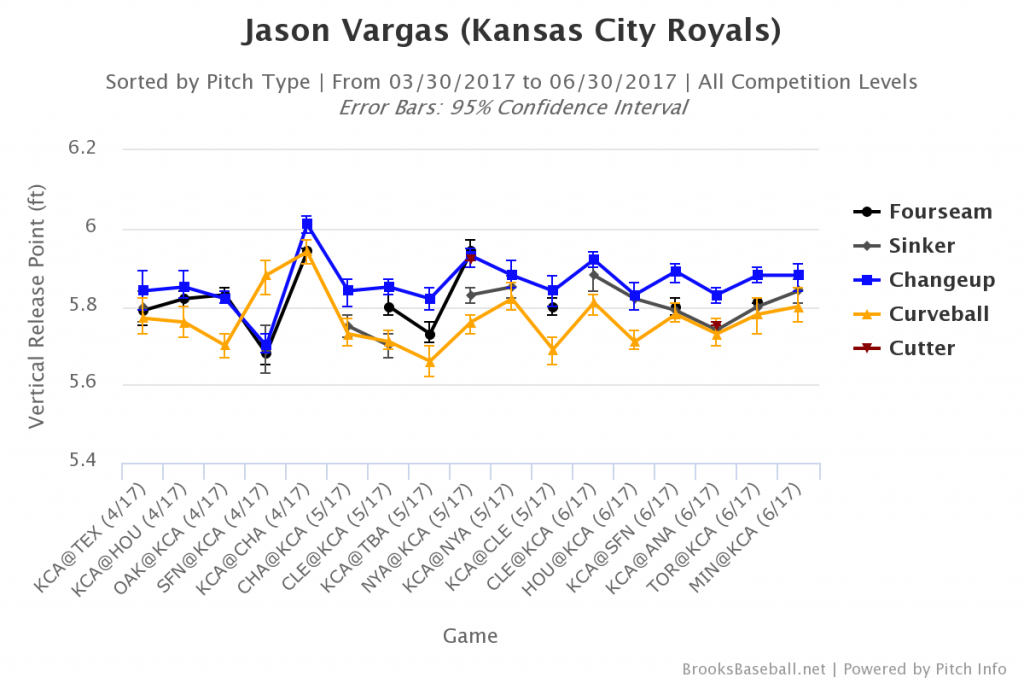

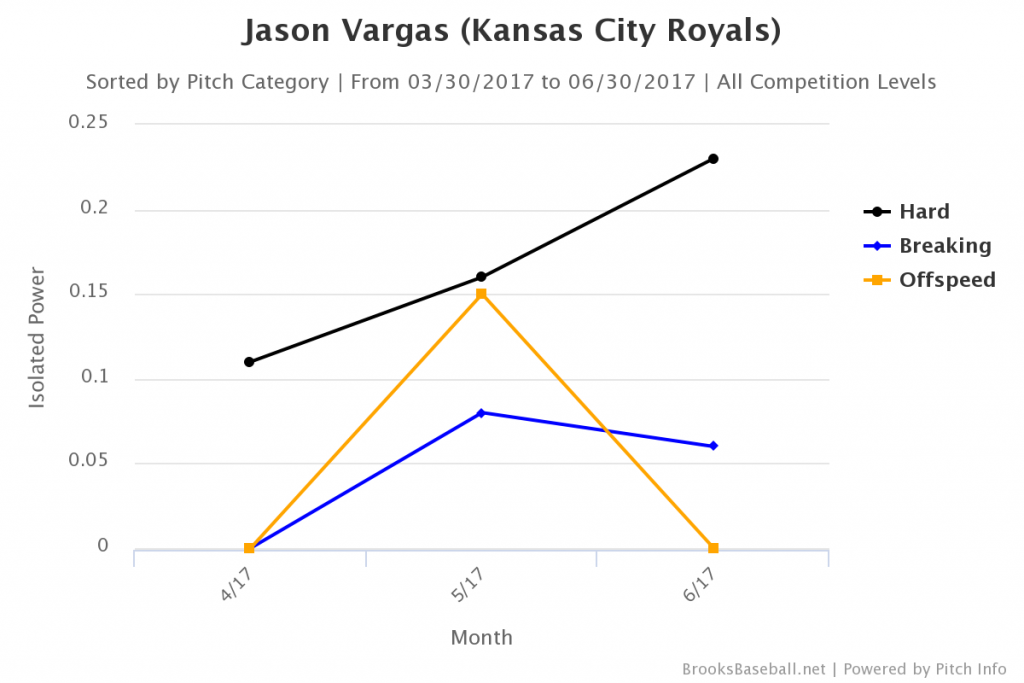
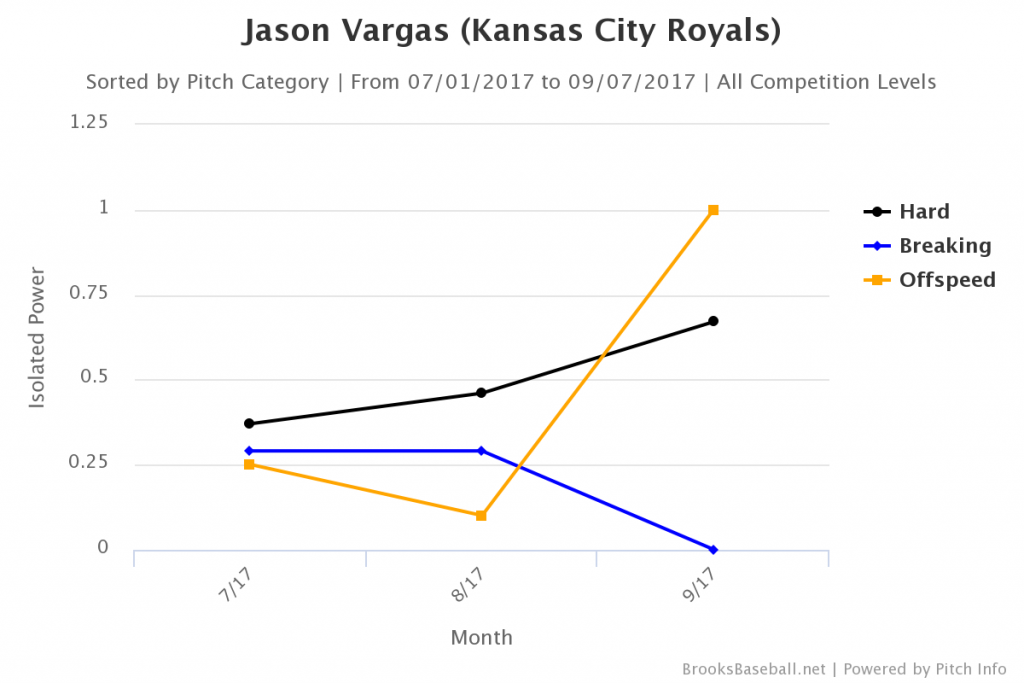
2 comments on “What’s the matter with Jason Vargas?”
Comments are closed.